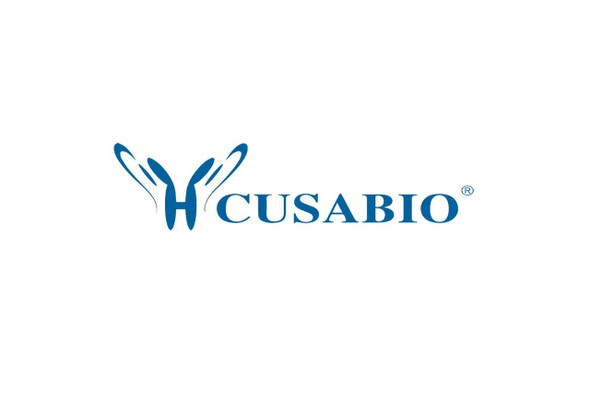Cusabio Human Recombinants
Recombinant Human Interleukin-10 receptor subunit alpha (IL10RA), partial | CSB-YP621688HU
- SKU:
- CSB-YP621688HU
- Availability:
- 25 - 35 Working Days
Description
Recombinant Human Interleukin-10 receptor subunit alpha (IL10RA), partial | CSB-YP621688HU | Cusabio
Alternative Name(s): CDw210a Interleukin-10 receptor subunit 1 CD_antigen: CD210
Gene Names: IL10RA
Research Areas: Immunology
Organism: Homo sapiens (Human)
AA Sequence: HGTELPSPPSVWFEAEFFHHILHWTPIPNQSESTCYEVALLRYGIESWNSISNCSQTLSYDLTAVTLDLYHSNGYRARVRAVDGSRHSNWTVTNTRFSVDEVTLTVGSVNLEIHNGFILGKIQLPRPKMAPANDTYESIFSHFREYEIAIRKVPGNFTFTHKKVKHENFSLLTSGEVGEFCVQVKPSVASRSNKGMWSKEECISLTRQYFTVTN
Source: Yeast
Tag Info: N-terminal 10xHis-tagged and C-terminal Myc-tagged
Expression Region: 22-235aa
Sequence Info: Partial
MW: 28.7 kDa
Purity: Greater than 85% as determined by SDS-PAGE.
Relevance: Cell surface receptor for the cytokine IL10 that participates in IL10-mediated anti-inflammatory functions, limiting excessive tissue disruption caused by inflammation. Upon binding to IL10, induces a conformational change in IL10RB, allowing IL10RB to bind IL10 as well (PubMed:16982608). In turn, the heterotetrameric assembly complex, composed of two subunits of IL10RA and IL10RB, activates the kinases JAK1 and TYK2 that are constitutively associated with IL10RA and IL10RB respectively (PubMed:12133952). These kinases then phosphorylate specific tyrosine residues in the intracellular domain in IL10RA leading to the recruitment and subsequent phosphorylation of STAT3. Once phosphorylated, STAT3 homodimerizes, translocates to the nucleus and activates the expression of anti-inflammatory genes. In addition, IL10RA-mediated activation of STAT3 inhibits starvation-induced autophagy (PubMed:26962683).
Reference: "Conformational changes mediate interleukin-10 receptor 2 (IL-10R2) binding to IL-10 and assembly of the signaling complex." Yoon S.I., Logsdon N.J., Sheikh F., Donnelly R.P., Walter M.R. J. Biol. Chem. 281:35088-35096(2006)
Storage: The shelf life is related to many factors, storage state, buffer ingredients, storage temperature and the stability of the protein itself. Generally, the shelf life of liquid form is 6 months at -20?/-80?. The shelf life of lyophilized form is 12 months at -20?/-80?.
Notes: Repeated freezing and thawing is not recommended. Store working aliquots at 4? for up to one week.
Function:
Involvement in disease:
Subcellular Location:
Protein Families:
Tissue Specificity:
Paythway:
Form: Liquid or Lyophilized powder
Buffer: If the delivery form is liquid, the default storage buffer is Tris/PBS-based buffer, 5%-50% glycerol. If the delivery form is lyophilized powder, the buffer before lyophilization is Tris/PBS-based buffer, 6% Trehalose, pH 8.0.
Reconstitution: We recommend that this vial be briefly centrifuged prior to opening to bring the contents to the bottom. Please reconstitute protein in deionized sterile water to a concentration of 0.1-1.0 mg/mL.We recommend to add 5-50% of glycerol (final concentration) and aliquot for long-term storage at -20?/-80?. Our default final concentration of glycerol is 50%. Customers could use it as reference.
Uniprot ID: Q13651
HGNC Database Link: N/A
UniGene Database Link: N/A
KEGG Database Link: N/A
STRING Database Link: N/A
OMIM Database Link: N/A









